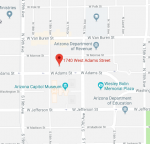Drug Seeking Behavior
From The State of Arizona Naturopathic Physicians Medical Board
On June 5, 2017, Governor Ducey declared a State of Emergency exists in Arizona due to the Opioid Overdose Epidemic.
This document is not an all-inclusive list, but is a general guideline to be used for the purpose of educating our physicians on common drug seeking behavior. As a healthcare professional, you share responsibility for solving the prescription drug abuse and diversion problem. You have a legal, ethical, and professional responsibility to uphold the law, help protect society from drug abuse, and to prescribe controlled substances appropriately.
Learn to recognize the Drug Abuser
Drug abusers or doctor-shoppers often possess similar traits and modus operandi. Learning to recognize these characteristics will help you identify the patient who may be attempting to manipulate you in order to obtain desired medications.
According to the DEA, the following are common characteristics of the Drug Abuser
|
|
|
|
|
|
|
|
Modus Operandi Often Used by the Drug-Seeking Patient
|
|
|
|
|
|
What You Should Do
Check the Controlled Substance Prescription Monitoring database (PMP). Pursuant to A.R.S. § 36-2602(F), Before prescribing an opioid analgesic or benzodiazepine controlled substance listed in schedule II, III or IV, the physician shall obtain a report regarding the patient for the preceding twelve months, from the controlled substances prescription monitoring program's central database tracking system, at the beginning of each new course of treatment and at least quarterly while that prescription remains part of the treatment.
Things to consider before you write that prescription
In the event you find evidence the patient has obtained prescriptions from multiple physicians and/or used multiple pharmacies to fill those prescriptions, you may be dealing with a drug seeking patient. If the information on the report is inconsistent with the patient's provided history, these should be clarified with the patient and with outside medical records when needed. Pay attention to who the physician(s) are the patient has seen in the past. You may notice evidence of prior visits with drug abuse counseling or rehab facilities. You may notice prior visits with dentist(s), where the patient has obtained pain medications. You may notice prior medications include drugs known to be used in rehab and detox situations.
You may refuse to write the prescription, or write for a very limited quantity of the medication and refer the patient to a pain specialist or mental health provider. Offer alternative forms of treatment such as acupuncture. Refer for further testing such as labs and/or imaging. If you choose to write the prescription, you must have a documented plan to taper the patient off of the medication in the future.


